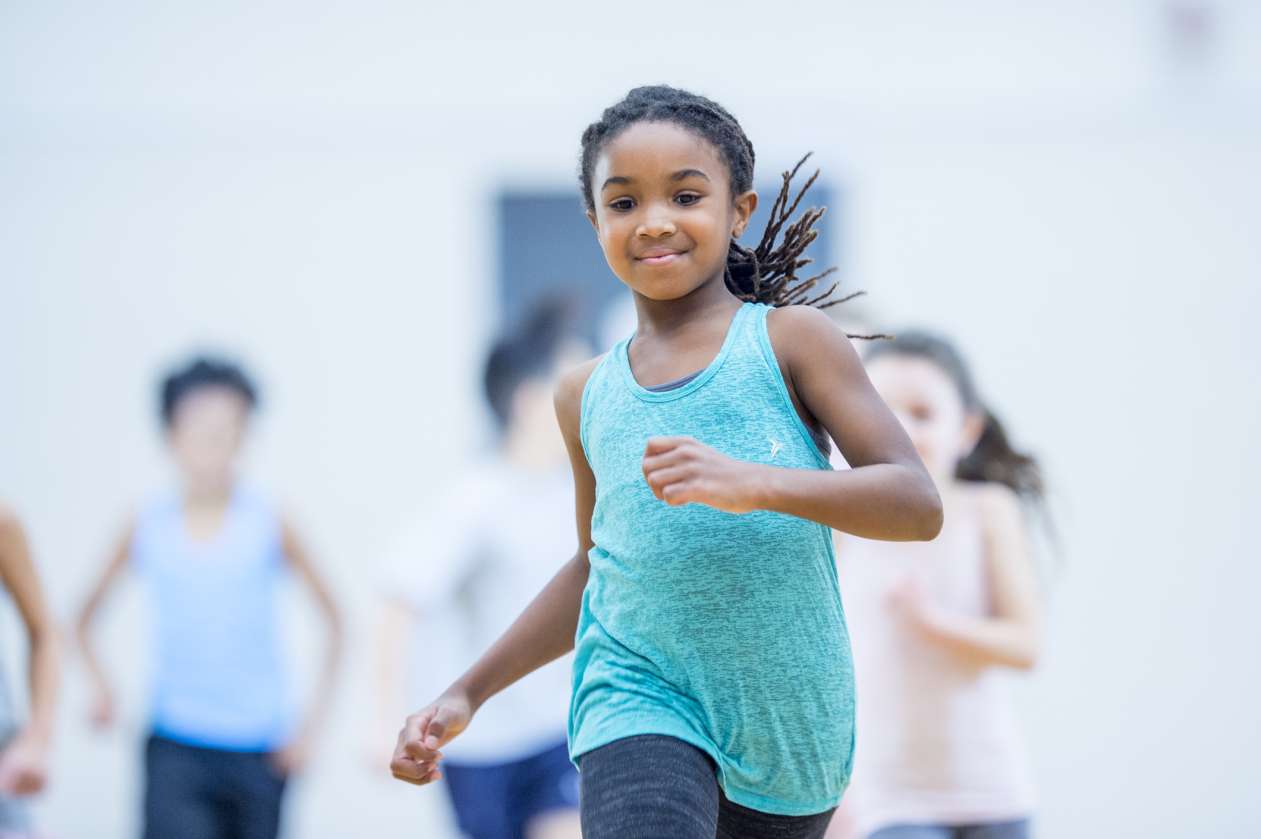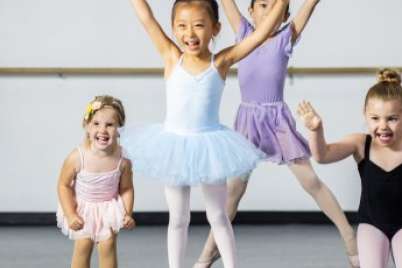
Girls activity programs: Don’t let your daughter get shortchanged
My daughter, who is three years old, asked me if she could do a class with music. We swim regularly, she already takes part in gymnastics, and she’s also been in a program that worked on fundamental movement skills (FMS) like running, jumping, throwing, catching, kicking, and balance. Now she wanted to do something with music, so we talked about options and decided on a dance class. We registered her in a program in our area, and on the first day we donned the pink tutu, shirt with the cute tagline, and put her hair in a bun. It was all very adorable and she was so excited.
The 17-year-old instructor had a room full of 3- and 4-year-olds, all female, and all in tutus and buns. The class began with the instructor asking the girls about their favourite movie — which surprised us because our daughter had not yet watched a movie, and it seemed that all the others had.
The girls spent quite a bit of time sitting to begin the class. When they started dancing, they were asked to cross the room with pointed toes, one at a time to the wall and back. This meant that while one girl crossed the room, the rest all stood still. The next movement that was asked of them was prancing like a horse, and again the girls crossed the room one at a time. While this was taking place, the rest of the girls were restless and bored and there was nothing offered for them to do.
The young instructor’s inexperience showed as she tried to manage the girls who were waiting for their turn, and then struggled between that and giving feedback to the girl who was crossing the floor. Therefore, there was no correction to technique, nor were the proper terms or movement mechanics for the movements explained.
My daughter didn’t really understand the instruction because she has been doing the movements, explained in proper terminology, in her other programs. Prance like a horse would be gallop like a horse in her other classes — and as she tried to figure out what she was supposed to be doing, there was no correction or assistance. Out of the 45-minute class, I estimated that the girls spent about 10 minutes actually being active.
At the end of the first class, I told my husband that I was disappointed and thought that we should withdraw our daughter and put her back into the class where she was learning basic movement skills. He felt the class was okay and that we should give it a chance. The second and third classes were no better and we actually had different instructors almost every week. We finally decided to withdraw her, and it was past the refund period but we didn’t care because we felt that the class was actually detrimental to her development.
This is our story about the dance program, and in no way reflects the quality of instruction or criticizes dance as an activity. But it illustrates what parents need to consider when they are registering their children in programs. Dance is a fantastic activity for developing physical literacy; we simply chose a poor program.
Instead, we went back to Active Start, which is aligned with long-term athlete development. This class is taught by instructors who have training in the NCCP FMS course, NCCP Run Jump Throw Wheel, High Five, and additional training in developing physical literacy.
At the Active Start class my daughter was instantly involved and spent 40 out of 45 minutes being active, learning and trying movements that were broken down and described by their appropriate names. Instructors provided corrective technique tips as needed and lots of positive reinforcement. Games and activities were designed to teach skills, boundaries and expectations were set out from the beginning, free play was built into the lesson plan, equipment was utilized to develop skills, and she was having fun.
What surprised me was that she was the only girl in the class. It struck me that many girls are in the dance class, standing around waiting for their turn, while the boys are learning movement skills they need to participate in whatever activities they want. We are limiting the opportunities for girls almost immediately by putting them into programs with a lower quality and where they are less active and not taught FMS from a young age.
And it starts at age 3!
I was startled by this because in my work I am very aware that we lose girls in sport and physical activity by the early teens, but the realization that we are setting them up for this dropout as early as age 3 was alarming. I’m sure most parents don’t start to think about it until their kids are in elementary school.
The trend we are seeing now — through research in Ontario around the gender gap in sport and physical activity — is that by age 8 girls lose motivation, by 10 they’re losing confidence, and by 12 they do not have the movement skills needed to participate. Between 12 and 14, they drop out entirely.
Additional studies are underway to investigate this further, but the example of my daughter resonates for me, and hopefully it will for you as well as you make choices to set your kids up for success. Choose programs with trained instructors who are teaching FMS and creating positive learning environments that are based on fun and engaging activities.






Hi Andrea, Great article. Thank you very much! I am interested in this Active Start class you have your daughter in, can you point me in the right direction for where I can find this in my neighbourhood? Thank you!
Thanks Lily and Tara for your inquiries about where you can find programs such as Active Start. This program is offered in Victoria, BC but similar programs exist in other areas of the country.
in general Sportball programs across Canada do a good job at developing physical literacy, however, they are expensive. Recreation centres and sport facilities across Canada are also doing a great job in offering programs that develop physical literacy.
We are doing work nationally to create consistent messaging and to showcase who is offering programs that develop physical literacy. This is a work in progress.
You can always call your local recreation centre and ask about the level of training of their instructors. You have a voice and can demand this type of programming and quality of training by chosing where you register your child.
Some quick questions that you can ask –
1. How much of the class time is spent actually moving?
2. What training do the instructors have?
3. What movement skills will be taught?
4. What environments will the class be taught in? (ie: air, water, ground, ice/snow)
5. What makes this program developmentally appropriate? (ie: what size balls are used? is there equipment for each child to interact with? how is the “field of play” modified to generate lots of interaction)
6. What makes this program fun?
Thank you for looking for this and asking for it!
There are good, experienced instructors and there are new instructors. They all have to start somewhere. Your experience with a new instructor at dance class does not equate to a general gender bias about children’s activity. Go and take a look at most t-ball teams for example.
I agree that there is a range of instructor levels. The instructor competency was absolutely an issue in this example.
As parents, we need to demand quality instruction to ensure that children have the best opportunity for success and enjoyment in their programming – so that we keep them engaged for the longer term – and so they develop the movement skills and confidence that they need to then have options in their future activities.
Our rec centres and those who operate programs need to train instructors so that they are skilled with the tools to deliver quality programs. I am working to try and elevate the quality of instruction for those frontline instructors.
The gender bias is around the choices that we as parents make in demanding the quality instruction and programming for our children.
If t-ball is doing a great job in quality instruction, developing movement skills, instilling confidence and making it fun and motivating for children – and there are equal numbers of boys and girls – then that is fantastic. We should tell that story.
The example in this story was especially poignant for me as a parent, and an advocate of quality programs because of the gender divide and the stark difference between the dance class and the Active Start program. If it had been a strong instructor, delivering a quality program to all girls – then I would have been thrilled. Dance should be a fantastic option for girls and boys to develop physical literacy. This example was not.
Really enjoyed this article. Where can I find Active Start classes in my area (Ottawa)? I didn’t find anything with a quick Google search.
Thanks Tara – See my comment above for Lily